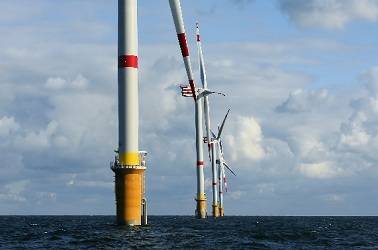
Posted on 02/27/2013 11:22:49 AM PST by Ernest_at_the_Beach
The realistic limits on wind power are probably much lower than scientists have suggested, according to new research, so much so that the ability of wind turbines to have any serious impact on energy policy may well be in doubt. Even if money were no object, the human race would hit Peak Wind output at a much lower level than has previously been thought.

The wind power future ... where the lights never even turn on
This new and gloomy analysis for global wind power comes from Professor David Keith of the Harvard School of Engineering and Applied Sciences. The prof and his collaborator, Professor Amanda Adams of North Carolina uni, have weighed into a row which has been taking place for some years between crusading pro-wind physicists and their critics.
The pro-wind boffins, led by such figures as Harvard enviro-prof Michael McElroy and Mark Jacobson of Stanford, have long contended that if there is any upper limit on the amount of energy that could be extracted from the Earth's winds it is well above the amount the human race requires. They further contend that extracting these vast amounts of power from the atmosphere will not have any serious impact on the world's climate.
Both these assertions, however, have been called into doubt - and the first one, that there's plenty of wind power to meet all human demands, is particularly shaky as it ignores the thorny issue of cost. McElroy, Jacobson and their allies tend to make wild assumptions - for instance that it would be feasible to distribute massive wind turbines across most or even all of the planet's surface.
Professor Keith has some scathing criticism for these ideas. To start with, he says that most large-scale wind potential calculations thus far have simply ignored the problem that the possible massive wind farms of the future are going to result in much less powerful winds for long distances behind them. He and Professor Adams write:
Estimates of global wind resource that ignore the impact of wind turbines on slowing the winds may substantially overestimate the total resource. In particular, the results from three studies that estimated wind power capacities of 56, 72 and 148 TW respectively appear to be substantial overestimates given the comparison between model results and the assumptions these studies made about power production densities ... To cite a specific example, Archer and Jacobson assumed a power production density of 4.3 W m-2 ... production densities are not likely to substantially exceed 1 W m-2 implying that Archer and Jacobson may overestimate capacity by roughly a factor of four.
Next page: Peak Wind
Well we still have solar power and biomass...and algae.
Is shoveling up the dead birds a green job?
LOL
Given that wind is only result of differences in pressures at different locations, how does any additional drag on wind decrease future wind sources? That is not making in decrease in the source for wind.
Wind has plenty of problems with subsidies/mandates. But I find little support for claim we will run out of it.

Is shoveling up the dead birds a green job?
With these windmills you make sure they sink into the water. You could generate from the heat gradient and have a more steady source of power. Next they will want fat people to ride exercise bikes to generate power like in Glenn Beck’s “Agenda 21”
The solution is obvious. All wind turbines must be clustered within a 1/2 mile radius around Capitol Hill.
Plus, isn’t there some concern that the whole continent will take flight with so many propellers going?
Peak oil; peak gas; peak coal; and now, peak wind.
One thing that there will always be an oversupply of, is the hot air from the global warming scientists and liberals. So, why not harness that? Gore alone could power a whole town.
Crap is known to be an energy source, so, why not go to Washington and harness all of the crap that comes out of there?
That sounds like a great idea. Can these wind turbines handle the speed (rpm’s) that would be created by those ill winds?
That is a concern although a sufficient number on Guam might prevent a capsize.
Well, there is conservation of energy to be reckoned with, no matter what the source of the wind is. You are taking energy out of a system, so if the system is a closed one, the total energy is decreasing, and if it is not a closed one, then you still need to be careful that you are not drawing off energy faster than it can be replaced from outside the system.
Taking all that power out of the wind may affect the climate! Conservation of energy presumably still applies. Is a slow-wind weather our future?
Predicted many centuries ago:
Revelation 7:1
“And after these things I saw four angels standing on the four corners of the earth, holding the four winds of the earth, that the wind should not blow on the earth, nor on the sea, nor on any tree.”
Disclaimer: Opinions posted on Free Republic are those of the individual posters and do not necessarily represent the opinion of Free Republic or its management. All materials posted herein are protected by copyright law and the exemption for fair use of copyrighted works.